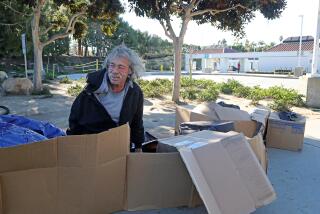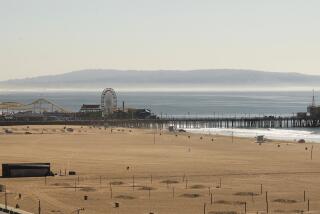Hermosa Plans Study of Parking
The City Council has called for a study to determine whether residents should be allowed to continue parking illegally on city-owned rights of way near the beach, an issue that has been disputed among Hermosa Beach residents for years.
Scores of beach dwellers urged the council at a meeting Tuesday to maintain the longstanding practice of letting them park--in violation of a city code--on the 22-foot-wide lots known as “side yards.” The lots are mainly concentrated just off the beach along “walk streets,” which are reserved for pedestrian use.
For decades, residents have used the land for private parking, upgrading and paving the spaces at their own expense, chaining off the areas and posting “No Parking” signs to keep the public out.
Recent complaints about the misuse of some spots forced city officials to take a look at the rarely enforced code. In April, the Planning Commission studied the most hotly contested areas, along Beach Drive and The Strand, and recommended that the special parking be allowed to continue with some restrictions.
But the City Council set aside that decision Tuesday and called for a citywide study, saying the parking situation affects the entire community.
“The issue is private use of public land, and it is rampant in Hermosa Beach,” said Councilman Chuck Sheldon, adding that the council needs more information before it can begin to discuss the problem. “This affects hundreds of residents, not just those along Beach Drive. We have no idea how many properties we are talking about.”
The council asked the city staff to study how the elimination of private use of public land would affect street parking. Some homeowners have predicted a worst-case scenario that would force thousands of cars to park on the already-crowded streets.
Most of the nearly 100 residents who packed the council chambers Tuesday night were relieved with the council’s delay, especially because it comes during the crowded summer months.
“We couldn’t be happier,” said Strand resident David Schumacher, who had collected hundreds of signatures on a petition asking for an environmental impact report to measure the “domino effect” of forcing more cars onto the streets. “It is the most equitable way to go about this task.”
More to Read
Sign up for Essential California
The most important California stories and recommendations in your inbox every morning.
You may occasionally receive promotional content from the Los Angeles Times.









